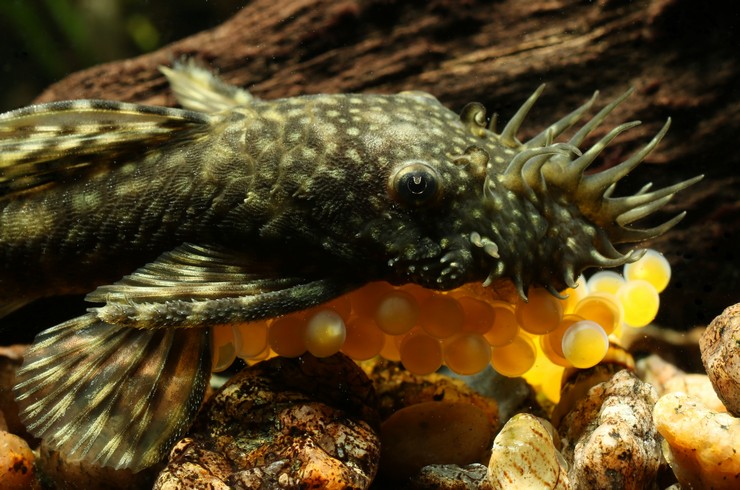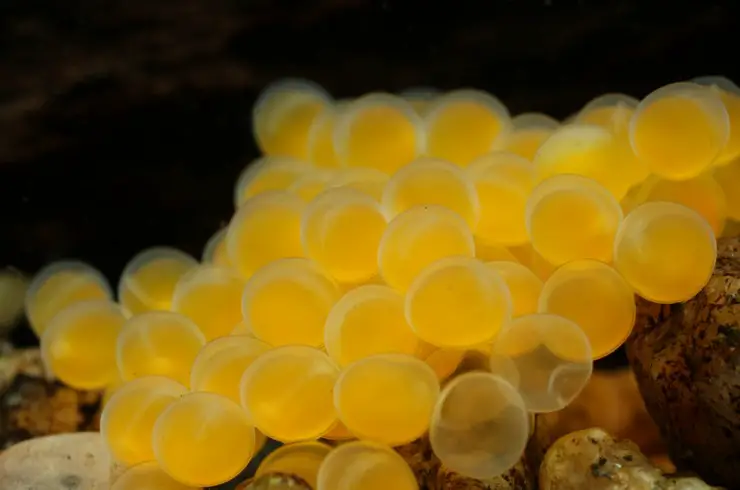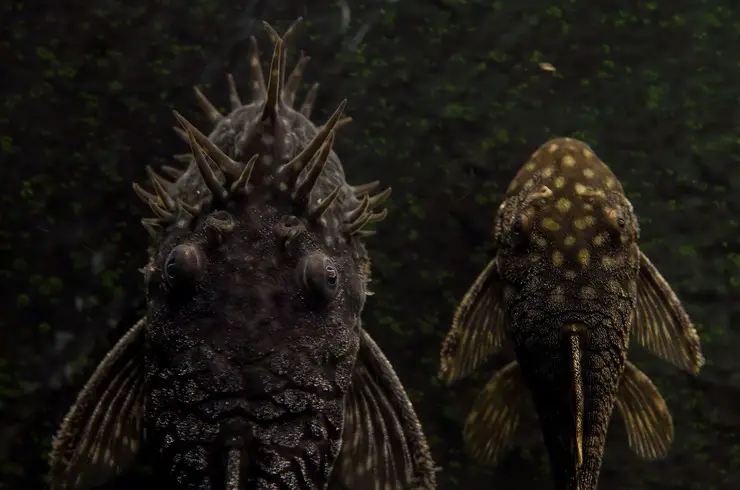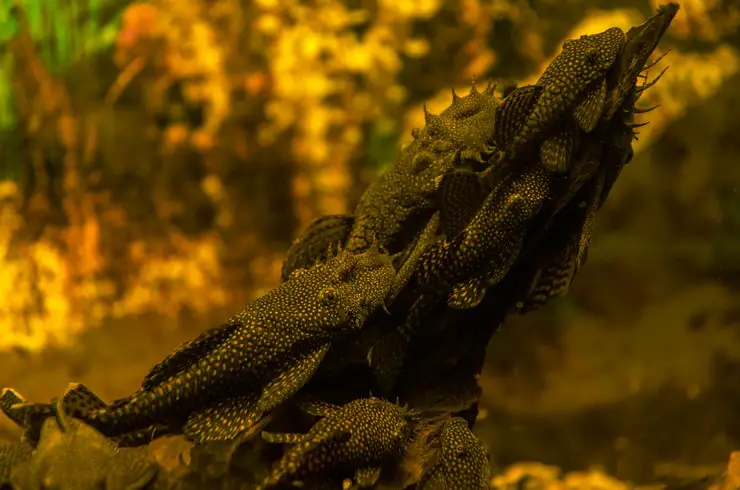You will no doubt find ancistrus catfish in almost any tropical aquarium. It is difficult to resist the desire to have this fish with an interesting body shape in your underwater corner. We must not forget that ancistrus also brings great benefits, clearing the glass and decorations in the aquarium from algal growth.
If you want to get offspring from your catfish, then you will not face serious difficulties, because breeding ancistrus is not difficult. In the presence of a pair of fish, it is not uncommon for “sticky” to multiply right in the common aquarium. True, in this case, there is a great risk of losing most of the offspring. Therefore, the ideal option is to breed in a separate spawning aquarium.
Breeding conditions
Puberty in ancistrus occurs at the age of about a year. It is recommended to select the most beautiful and healthy producers for reproduction. It is desirable that they were of the same size: there are cases when larger males killed a small female. A week before the expected spawning, it is recommended to plant the male and female in separate containers and feed abundantly with plant food.
The spawning container should have a volume of 50-80 liters. It is equipped with a small filter and aeration system. There is no need for the soil, but tubular shelters will be needed in which the eggs will develop. In their role can be used PVC pipe cuttings, bamboo pipes, ceramic grottoes, and pots. Their diameter should not be too large – this will make it difficult for the male to fertilize the eggs, however, pay attention to the fish being placed in shelters. It is also useful to put small natural driftwood in the aquarium and start floating plants: hornwort, riccia, elodea, etc. It is not recommended to make lighting too bright.
It is best to add water to the spawning tank from the main aquarium. Water parameters do not play a special role in breeding ancistrus, but lowering the temperature by 2-3 ° C and replacing 1/3 of the volume of the aquarium will serve as a good incentive.
The male, ready for spawning, chooses a place for himself and begins to clean it. This process is not fast, it often lasts a couple of days. At this time, the female’s abdomen is noticeably rounded, where the eggs develop. After a short mating dance, the female is ready to lay eggs and goes to the male’s hideout.
Most often, the spawning of ancistrus occurs at night. In the nest prepared by the male, the female lays from 30 to 200 eggs. This amount depends on her age and physiological condition. Young females are generally not as productive as adults. After the female lays eggs, the male drives her away, and all the care for the future offspring falls on the male shoulders. The female must be removed from the aquarium without fail so that the male cannot injure her.
Ancistrus caviar is large, bright orange in color. The males are very careful about it: they fan their fins and eat dead eggs, and in the case of a shared aquarium, they also drive away unwanted guests. Surprisingly, all the time while the eggs are developing, the male does not even feed.
In a general aquarium, ancistrus eggs can most often be found under driftwood, behind decorations, and a filter. In this case, in order to obtain the maximum offspring, it is recommended to carefully cut the eggs with a blade and move them to the spawning aquarium, or (if possible) transfer them along with the laying place. At the same time, the male should not be moved to another container, the catfish can destroy eggs from severe stress.
If the male was with several females in the spawning aquarium, then he can fertilize the eggs of each and will also take care of each clutch. Moreover, scientists have found that females prefer males who are already guarding the clutch.
How to tell a female from a male Ancistrus
Ancistrus are characterized by pronounced gender dimorphism. But it manifests itself only when the fish reaches puberty. In most species, this occurs at the age of about a year, and in some, for example, the stellate Ancistrus L181, even at about two years.
Ancistrus males are noticeably larger than females, but the most important feature that distinguishes them is the presence on the head of cutaneous branching processes resembling hooks – tentacles. They are located all over the head and can reach a length of 1.5-2 cm. In females, on the contrary, they are located only along the edges of the head and are very poorly developed (no more than 1 mm in length), and in some cases, they are completely absent.
Fry
The development of ancistrus eggs takes 4-7 days, depending on the water temperature. To speed up the process, you can raise it to 26-28 ° C. All this time, the male tirelessly watches over his offspring and does not leave him for a minute. The instinct of caring for offspring prevails even over the food one.
After the end of incubation, larvae emerge from the eggs, which have a very large yolk sac. An interesting fact: with the help of his processes, the male sometimes helps the fry to get out of the eggs. The first 24-48 hours after emergence, the larvae hang motionless and feed on their yolk sac. After its depletion, the fish turn into fry and begin an independent life. As soon as this happens, the male finally sighs with relief and goes in search of food. At this time, it should be deposited and returned to the main aquarium.
Caring for a spawning aquarium with ancistrus fry consists of daily changes of 20% water. The size of the fry allows them to be fed with high-quality dry food for loricaria catfish, for example, Tetra Pleco Tablets or Tetra Pleco Spirulina Wafers. They contain all the essential ingredients for the healthy growth of ancistrus. Sometimes scalded lettuce or cucumber pieces can be added to the diet. It is very important to keep the aquarium clean and remove uneaten food debris so as not to provoke the development of pathogens.
